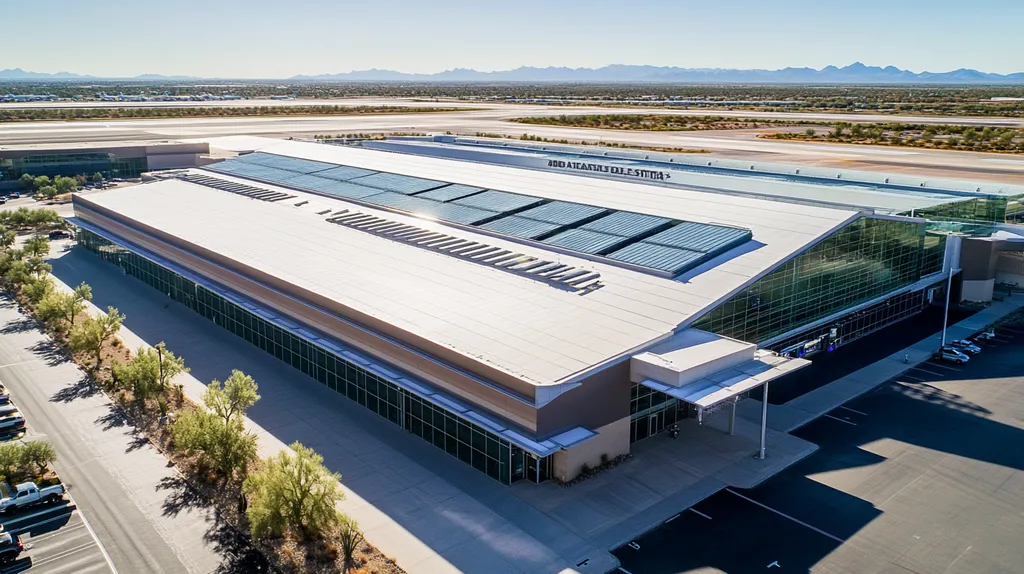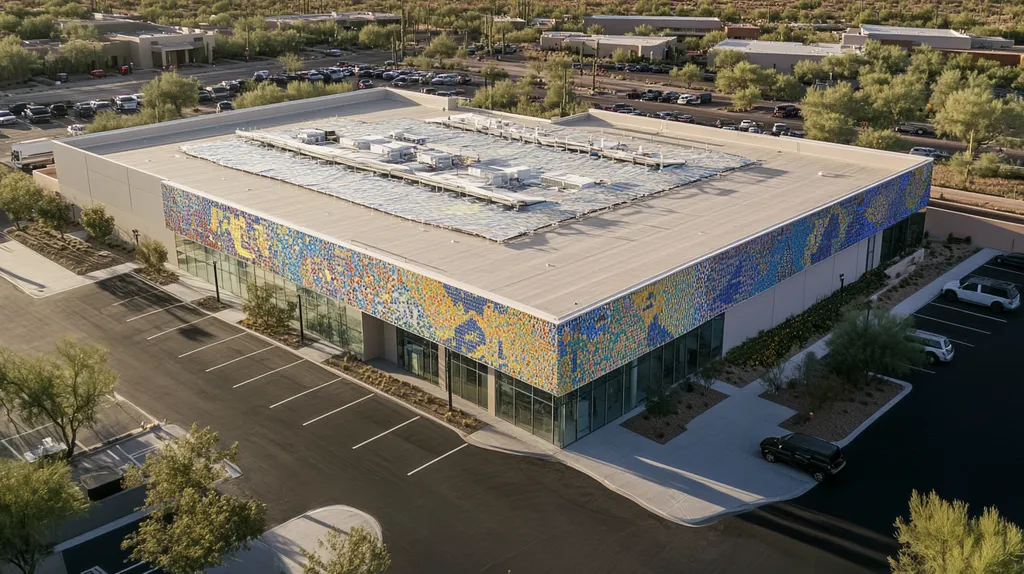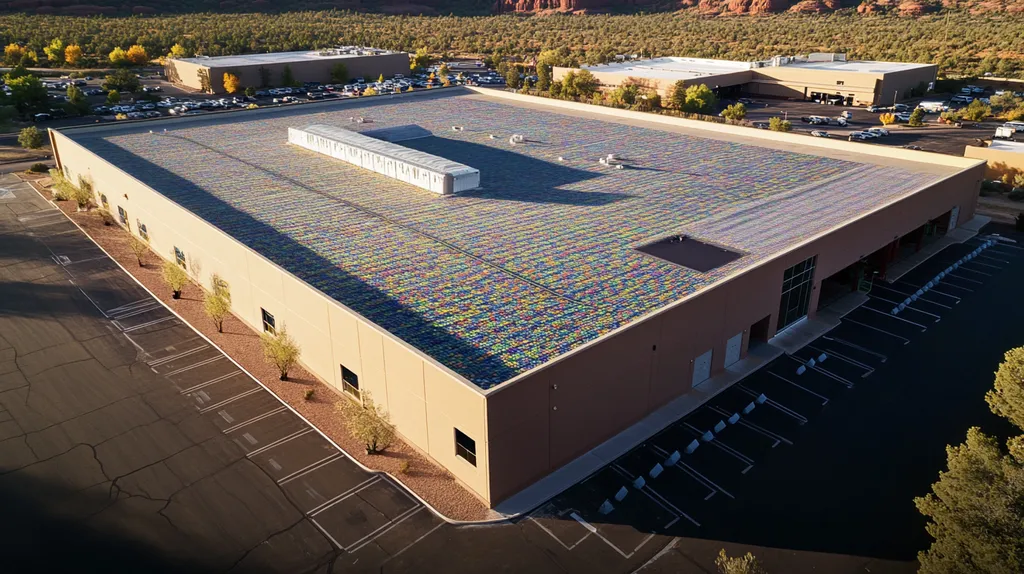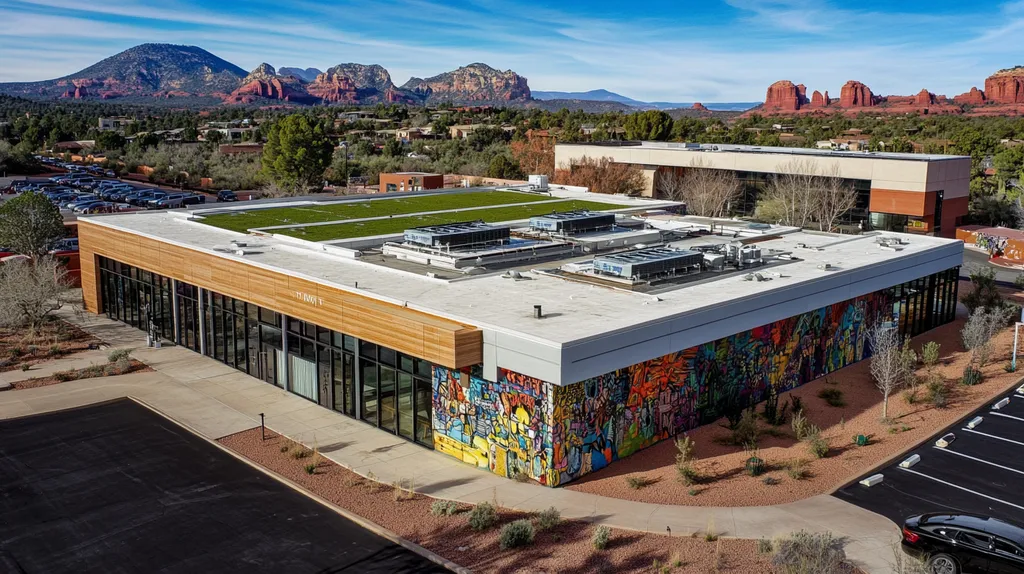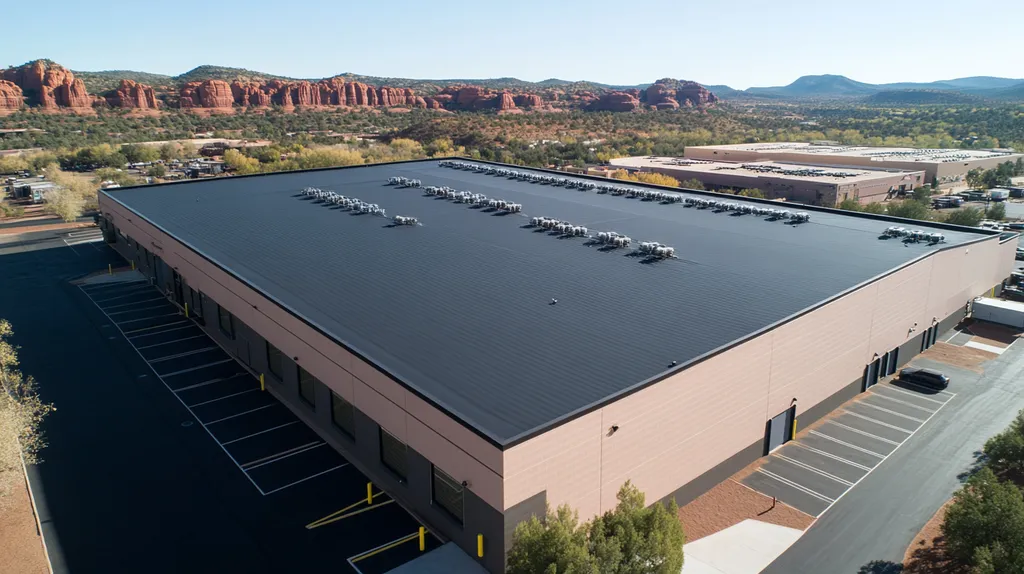Welcome to today’s Battle Royale featuring two roofing heavyweights: “Rodent Bait Stations” in the east corner versus “Glue Traps” in the west!
Tonight’s showdown pits these contenders against each other across six punishing rounds designed to test every aspect of their performance for Effective Pest Traps for Surrounding Industrial Roofing Areas.
At stake? Millions in potential costs, decades of building protection, and the critical performance demands of modern commercial and industrial facilities.
Our professional judging panel will evaluate each round on technical merit, real-world performance, and value delivery. After all six rounds, we’ll declare our ultimate champion.
Ladies and gentlemen, facility managers and building owners… it’s time to rumble!
ROUND 1: INITIAL COSTS & INSTALLATION
When rodents invade industrial roofing areas, every day of delay multiplies the potential for catastrophic damage. These unwanted guests can chew through electrical wiring, destroy insulation, and compromise structural integrity within weeks. For facility managers, choosing the right pest control solution isn’t just about catching rodents – it’s about protecting millions in assets and preventing costly business disruptions.
Material Expenses
Initial material costs create a stark contrast between these competing solutions. Professional-grade rodent bait stations typically run $25-35 per unit for tamper-resistant models suitable for industrial applications, with specialized rooftop versions reaching $50-75 each.
Glue traps present a much lower entry point at $2-5 per unit, even for commercial-grade options. However, this apparent cost advantage comes with a critical caveat – glue traps require frequent replacement, especially in dusty rooftop environments where their adhesive properties degrade quickly.
For large industrial facilities requiring comprehensive coverage, the initial cost difference between outfitting an entire rooftop perimeter can reach thousands of dollars. The Rentokil Rodent Ceiling Trap offers an innovative middle-ground solution, combining durable construction with accessibility from below. (source: Rentokil)
When considering pure material expenses, glue traps hold the clear “ADVANTAGE” despite their replacement requirements.
Installation Complexity
Setting up an effective bait station network demands careful planning and expertise. Each unit requires precise placement, secure mounting, and proper spacing to create an effective barrier, often necessitating professional installation.
Proper bait station installation also involves creating detailed documentation for maintenance teams and ensuring compliance with local regulations regarding rodenticide placement. This process typically requires 2-3 days for an average industrial facility.
Glue trap installation, by comparison, requires minimal technical expertise. Basic safety training and a simple placement guide are sufficient for most maintenance teams to deploy these devices effectively.
Given the significant difference in setup requirements, glue traps claim the “ADVANTAGE” for installation complexity.
Project Timeline
Time-to-deployment represents a critical factor when facing active infestations. Bait station systems require careful planning, often including site surveys, custom mounting solutions, and safety protocol development before installation can begin.
The process of ordering, receiving, and installing a complete bait station system typically spans 1-2 weeks. This timeline includes necessary preparation work and safety documentation.
Glue traps can be deployed immediately upon delivery, with most facilities able to establish complete coverage within 24-48 hours. This rapid response capability proves invaluable during emergency situations.
In terms of project timeline, glue traps secure another clear “ADVANTAGE” due to their immediate deployability.
ROUND 1 WINNER: GLUE TRAPS
ROUND 2: DURABILITY & LIFESPAN
When rodents take up residence in your roofing system, every passing week multiplies the destruction. These unwanted tenants don’t just squat – they renovate, chewing through critical infrastructure with reckless abandon. The durability of your pest control solution determines whether you’ll be replacing traps weekly or maintaining a reliable defense for months.
Weather Resistance
Industrial rooftops face brutal environmental conditions that can quickly render pest control solutions ineffective. Exposure to UV rays, torrential rain, and temperature swings from freezing to scorching creates a harsh testing ground for any equipment.
Bait stations are specifically engineered for these challenges, featuring UV-stabilized plastics and weather-resistant construction. Their sealed designs prevent water infiltration while maintaining accessibility for servicing, allowing them to remain effective through multiple seasons.
Glue traps falter dramatically in outdoor conditions. Rain renders them useless, while heat can melt the adhesive into an ineffective mess. Dust and debris quickly coat the sticky surface, neutralizing the trap’s core function.
For weather resistance, bait stations claim a clear “ADVANTAGE” over their more fragile competitors.
Maintenance Requirements
The frequency and complexity of maintenance directly impacts both labor costs and control effectiveness. Simple solutions that require constant attention often prove more expensive than durable options over time.
Bait stations typically need monthly checks to verify bait levels and structural integrity. Their tamper-resistant design protects the bait from environmental degradation, extending its effective lifespan.
Glue traps demand weekly inspections and frequent replacement, especially in industrial environments. The adhesive surface deteriorates rapidly, requiring complete trap replacement rather than simple servicing.
When considering maintenance demands, bait stations secure another clear “ADVANTAGE”.
Operational Lifespan
The total functional lifespan of pest control equipment determines its true cost-effectiveness. A seemingly expensive solution that lasts years may prove cheaper than repeatedly replacing budget options.
Properly maintained bait stations can remain effective for 3-5 years before requiring replacement. Common wooden snap traps secured to rooftop surfaces offer similarly impressive durability when properly positioned along rodent pathways. (source: Maricopa County)
Glue traps typically last only 1-2 weeks in optimal conditions, with environmental factors often reducing their effectiveness even sooner. This short lifespan creates a constant replacement cycle that strains maintenance budgets.
For operational lifespan, bait stations claim yet another “ADVANTAGE”.
ROUND 2 WINNER: Rodent Bait Stations
ROUND 3: PERFORMANCE FACTORS
When rodents invade industrial rooftops, the effectiveness of your pest control solution directly impacts your bottom line. Every day these destructive pests remain active, they’re potentially causing thousands in damage to electrical systems, insulation, and membrane integrity. The wrong trap choice doesn’t just fail to catch rodents – it gives them an all-access pass to wreak havoc on your facility.
Efficiency and Effectiveness
Bait stations operate as systematic elimination tools, using specially formulated attractants that draw rodents from across the entire roofing area. Their enclosed design protects the bait from environmental degradation while allowing multiple rodents to feed over time.
These stations excel at population control by eliminating entire colonies through shared feeding behaviors. A single properly placed station can impact dozens of rodents within its effective radius.
Glue traps offer rapid deployment but limited range, capturing only rodents that directly contact their surface. Pre-baited versions can attract rodents quickly, providing fast results within 24-48 hours. (source: Catchmaster)
While both solutions can be effective, bait stations claim the “ADVANTAGE” through their broader impact radius and colony elimination capabilities.
Environmental Impact
Modern bait stations feature secure, tamper-resistant designs that minimize potential exposure to non-target species. Their contained nature prevents bait dispersal while allowing for precise placement in high-activity zones.
The primary environmental concern with bait stations involves secondary poisoning risk, which manufacturers address through specialized formulations designed to break down quickly if exposed to the elements.
Glue traps present significant environmental challenges, including the potential to trap beneficial species and creating disposal issues with trapped rodents. Their single-use nature also generates substantial waste in large-scale deployments.
Based on containment capability and reduced waste generation, bait stations secure another clear “ADVANTAGE”.
Monitoring and Control
Bait stations integrate easily with professional pest management programs, offering clear consumption indicators and activity tracking. Their design allows for systematic monitoring without disturbing the actual control mechanism.
Regular inspections can document bait consumption patterns, helping facility managers optimize placement and identify high-activity zones. This data-driven approach supports continuous improvement of control strategies.
Glue traps provide immediate visual confirmation of catches but offer limited insight into overall population patterns. Their rapid degradation also complicates long-term monitoring efforts.
For comprehensive pest monitoring capabilities, bait stations claim the “ADVANTAGE”.
ROUND 3 WINNER: Rodent Bait Stations
ROUND 4: MAINTENANCE REQUIREMENTS
Every maintenance shortcut on your industrial roof becomes an invitation for rodents to set up shop. When pest control devices fail due to poor upkeep, rats don’t just maintain their presence – they multiply exponentially, turning minor intrusions into full-scale infestations. Within weeks, these unwanted tenants can transform critical infrastructure into their personal playground, leaving facility managers with repair bills that could have funded years of proper maintenance.
Inspection Frequency
Bait stations require monthly inspections to verify bait levels, structural integrity, and proper placement. These scheduled checks create a predictable maintenance rhythm that fits neatly into existing facility maintenance routines.
Professional-grade stations feature inspection windows and secure access points that streamline the verification process. Their durable construction means maintenance focuses primarily on bait replacement rather than equipment repair.
Glue traps demand weekly or even daily inspections in high-traffic areas. Their rapid degradation means each check often results in complete trap replacement, creating a perpetual maintenance cycle.
When it comes to inspection demands, bait stations claim the clear “ADVANTAGE” through their predictable, manageable schedule.
Service Complexity
For roof rats, effective control requires strategic placement both at ground level and elevated positions along common travel routes. Bait stations must be securely mounted and properly spaced to create an effective barrier against intrusion. (source: UC IPM)
However, once properly installed, bait station servicing involves simple, standardized procedures that maintenance teams can master quickly. Their tamper-resistant designs protect both the bait and service personnel.
Glue trap servicing presents unique challenges, particularly when dealing with captured rodents. The removal and disposal process requires careful handling to avoid contact while managing potentially distressed animals.
For service complexity, bait stations secure another “ADVANTAGE” through their straightforward maintenance protocols.
Long-term Management
Bait stations support systematic pest control through detailed activity tracking and consumption monitoring. Their permanent installation points create reliable data collection opportunities that inform strategic adjustments.
This approach allows facility managers to identify emerging problems early and adjust control measures proactively. The cumulative data helps optimize placement and bait selection over time.
Glue traps provide limited long-term management value due to their temporary nature. Their constant replacement cycle disrupts consistent monitoring and makes trend analysis virtually impossible.
In terms of long-term management capability, bait stations claim the “ADVANTAGE”.
ROUND 4 WINNER: Rodent Bait Stations
ROUND 5: SUSTAINABILITY CREDENTIALS
Every pest control decision on your industrial roof carries environmental consequences that extend far beyond simple rodent removal. While facility managers focus on catching rats, regulators are watching for chemical containment, waste management compliance, and ecological impact. One wrong choice can cascade into six-figure fines, damaged corporate sustainability ratings, and years of remediation requirements.
Environmental Impact
Modern bait stations utilize advanced containment systems that minimize environmental exposure through tamper-resistant designs and strategic placement protocols. However, these units still contain rodenticides that can potentially affect non-target species if improperly maintained or compromised.
Advanced monitoring systems within bait stations help prevent overflow and track consumption patterns, reducing the risk of chemical dispersion. Yet the presence of toxins creates inherent environmental liability that requires careful management.
Glue traps present fewer chemical risks but generate significant solid waste through their disposable nature. Their non-selective capture mechanism also threatens beneficial species, potentially disrupting local ecosystems.
Given their lower chemical impact and simpler disposal requirements, glue traps claim the “ADVANTAGE” in environmental considerations.
Resource Efficiency
Bait stations represent a resource-intensive solution requiring regular chemical replenishment and specialized disposal protocols. Their durable construction reduces physical waste but demands ongoing material inputs for effective operation.
The Rentokil Rodent Ceiling Trap offers an innovative hybrid approach, combining reusable hardware with accessible servicing from ground level, significantly reducing maintenance resource requirements. (source: Rentokil)
Glue traps generate constant physical waste through their single-use design. While each unit requires minimal resources to produce, their high replacement rate creates substantial cumulative material consumption.
Neither option offers clear superiority in resource efficiency, resulting in a “TIE” for this category.
Regulatory Compliance
Bait stations face increasing regulatory scrutiny regarding chemical storage, usage documentation, and disposal procedures. Their operation requires detailed record-keeping and compliance with evolving environmental protection standards.
Maintaining proper certifications and permits for rodenticide use adds administrative overhead. Changes in local regulations can suddenly restrict or prohibit certain bait formulations, forcing expensive system modifications.
Glue traps currently face fewer regulatory requirements due to their non-toxic nature. Their simple operation and disposal typically align with standard waste management protocols, reducing compliance complexity.
For regulatory simplicity and reduced compliance burden, glue traps secure the “ADVANTAGE”.
ROUND 5 WINNER: GLUE TRAPS
ROUND 6: SPECIALIZED APPLICATIONS
Every rooftop tells a story of invasion and defense, where choosing the wrong pest control strategy can transform minor intrusions into catastrophic infestations within weeks. Industrial facilities face unique challenges that demand specialized solutions – from extreme weather exposure to vast surface areas requiring protection. The wrong choice between bait stations and glue traps doesn’t just waste money – it gives destructive pests time to establish permanent colonies.
Application Flexibility
Successful pest control on industrial roofs demands solutions that can adapt to complex layouts and changing conditions. Bait stations offer versatile mounting options and adjustable positioning to create comprehensive coverage barriers along known rodent pathways.
For roof rats, bait stations can be strategically mounted both at ground level and in elevated positions along common travel routes, creating an effective multi-level defense system. Their secure mounting capabilities ensure consistent placement even in harsh conditions. (source: UC IPM)
Glue traps present significant placement limitations due to their vulnerable nature. Their effectiveness plummets when exposed to environmental factors, restricting deployment to protected areas that may not align with actual rodent activity zones.
Given their superior adaptability to diverse mounting locations, bait stations claim the clear “ADVANTAGE” in application flexibility.
Specialized Environment Performance
Industrial rooftops create unique challenges with their vast surface areas, multiple access points, and exposure to extreme conditions. Bait stations maintain effectiveness across these challenging environments through weather-resistant construction and protected bait compartments.
Their tamper-resistant designs prevent displacement by wind or wildlife while allowing systematic monitoring of rodent activity patterns. This reliability proves crucial for maintaining continuous protection across large industrial facilities.
Glue traps struggle significantly in specialized industrial environments. Their adhesive surfaces quickly become compromised by industrial dust, moisture, and temperature fluctuations, creating gaps in protection that rodents readily exploit.
For performance in specialized environments, bait stations secure another clear “ADVANTAGE”.
Integration Capabilities
Modern industrial pest control demands solutions that integrate seamlessly with existing facility management systems. Bait stations support digital monitoring, automated maintenance scheduling, and detailed activity tracking through QR codes and RFID tags.
This integration capability allows facility managers to coordinate pest control with other maintenance activities, optimizing resource allocation and response times. Real-time monitoring helps identify emerging issues before they escalate into major infestations.
Glue traps offer minimal integration potential due to their temporary nature and lack of monitoring capabilities. Their manual inspection requirements create inefficient workflows that strain maintenance resources.
For system integration capabilities, bait stations claim the “ADVANTAGE”.
ROUND 6 WINNER: Rodent Bait Stations
AND THE WINNER IS…
After six punishing rounds of technical evaluation, with millions in facility protection on the line, we have our undisputed champion!
With decisive victories in Durability, Performance, Maintenance, and Specialized Applications, RODENT BAIT STATIONS emerge as the heavyweight champion of industrial rooftop pest control, winning 4 rounds to 2!
The champion’s combination of weather resistance, systematic elimination capability, and superior integration features proved too powerful for the challenger to overcome. Its ability to deliver consistent performance while minimizing maintenance demands established clear dominance in the crucial middle rounds.
However, don’t count Glue Traps out completely! Their quick deployment capability and lower initial costs make them ideal for emergency response scenarios or short-term tactical interventions. When rapid response matters more than long-term strategy, these scrappy contenders can still pack a serious punch.
*Important Notice: Every facility faces unique challenges based on location, climate, and structural characteristics. This analysis provides general guidance but cannot account for all variables. Always consult qualified pest control professionals who can evaluate your specific situation and recommend appropriate solutions.*
Remember, champions aren’t crowned by following the crowd – they’re made by matching the right solution to their specific battleground. Choose your pest control contender wisely, because in the industrial roofing arena, there are no second chances when rodents start throwing haymakers at your infrastructure.
FREQUENTLY ASKED QUESTIONS
Q. What are initial costs for pest control on a commercial roof?
A. Initial material costs for bait stations range from $25-75, while glue traps cost $2-5 each. However, glue traps require frequent replacement, which adds up over time. For large industrial roofing areas, this difference can amount to thousands, making bait stations potentially more economical in the long run.
Q. How durable are pest traps for industrial roof environments?
A. Bait stations are built to withstand harsh weather conditions, offering durability that glue traps lack. Glue traps can deteriorate quickly, especially with moisture exposure and debris accumulation. So, for longevity in industrial settings, bait stations are the better choice and require less frequent replacement.
Q. Which pest control solution is more effective for a commercial roof?
A. Bait stations excel in eliminating entire rodent populations through attractants and shared feeding. In contrast, glue traps may provide immediate results but are limited to singular captures. Therefore, bait stations are generally more effective in controlling infestations across industrial roofing areas.
Q. How often should traps be maintained on an industrial roof?
A. Bait stations require monthly inspections for optimal maintenance, allowing for effective tracking. Glue traps, however, often need weekly or even daily checks due to their rapid wear and degradation. This makes bait stations the more manageable option in terms of maintenance schedules.
Q. What are the sustainability credentials of pest control methods on industrial roofs?
A. Bait stations may have higher resource demands due to chemical use, but they also minimize waste through durable design. Glue traps, while less chemical-intensive, contribute to significant waste through their single-use nature. Neither option is perfect, highlighting the need for careful management of both types.
Q. Which solution is best for specialized applications on an industrial roof?
A. Bait stations offer superior application flexibility, adapting to multi-level layouts and harsh conditions. Glue traps are limited in placement and can fail when exposed to the elements. For large industrial roofs, bait stations prove to be much more effective in securing comprehensive coverage against rodents.
Q. How does pest control impact local ecosystems around an industrial roof?
A. Bait stations, while effective, carry the risk of secondary poisoning if not carefully monitored. On the other hand, glue traps can inadvertently capture beneficial species, disrupting local ecosystems. Both options require strategic placement and management to balance effective pest control with ecological health.


